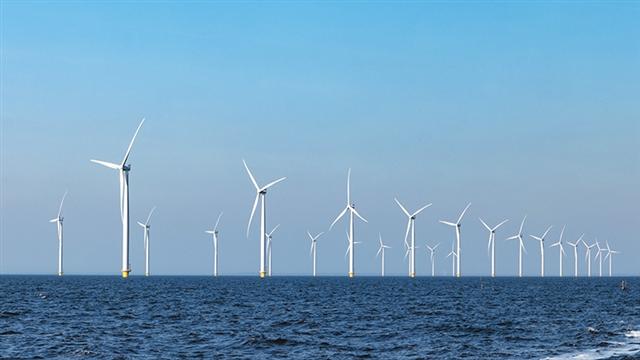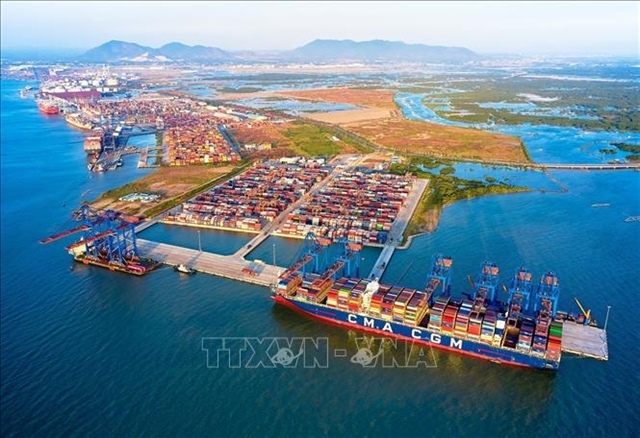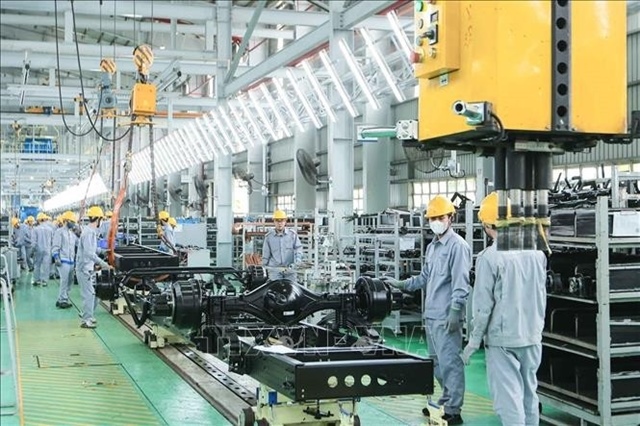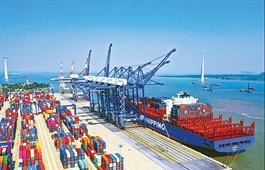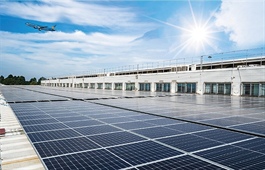Power structure balance required
Power structure balance required

The total capacity of renewable energy sources in Vietnam accounts for 25 per cent of all sources, Photo: Shutterstock
|
The year 2019 might be the last time that Power Generation Corporation 1 (GENCO 1) had a high power output. In 2020, its entire electricity production decreased by around 0.6 per cent compared to the previous year.
GENCO 1 has an installed capacity of over 7,120MW, which stems from several sources such as coal, hydroelectricity, and solar power. Nguyen Manh Huan, deputy general director of GENCO 1, said that his company is now facing risks of not being able to recover investment costs under the electricity price plan. This development left a huge impact on GENCO 1’s finances as the company added many new sources of renewable energy in a short time, causing its thermal power plants to not reach its designated 6,000 hours per year.
Becoming a leading corporation in the energy sector has become a more challenging target for GENCO 1 in the context of the complicated developments during the COVID-19 pandemic and decreasing water flows towards hydroelectric reservoirs due to climate change.
Risk of overdoing
The scale of Vietnam’s electricity system ranks second in Southeast Asia and 23rd in the world, with total installed capacity by the end of 2020 reaching 69,300MW, an increase of nearly 14,000MW compared to 2019, according to the calculation of state-run Electricity of Vietnam (EVN).
The total capacity of renewable energy sources amounts to 17,430MW, a stunning increase of 11,780MW compared to 2019, which accounts now for a quarter of all national power sources.
However, the asynchronous development between renewable energy and the national power grid throughout the last few years has caused Vietnam’s lines to be overloaded, affecting the mobilisation of traditional power sources, peak hour changes, and transmission rates.
Specifically, La Hong Ky, an expert from the National Steering Committee for Electricity Development told VIR that the biggest disadvantage of solar power is its instability, due to its heavy dependence on weather.
“Meanwhile, the cost of this power source is still high, energy storage is difficult, and the necessary land area is often large, as one megawatt peak of solar power needs roughly 1.2 hectares,” Ky said.
He explained that many solar investors have asked for additional planning and quickened project implementation, leading to an asynchronous development of solar power within the overall structure of renewable energy. “For instance, up to now no document or guidance is regulating the percentage between solar and rooftop solar power sources,” Ky added.
The Ministry of Industry and Trade’s (MoIT) data from reviewing the implementation of the previous four years of power development shows that thermal power sources only grew by 57.6 per cent while renewable energy sources rose by up to 205 per cent. The completion rate of 500kV transformer stations came out at 73 per cent, while 88 per cent of 500kV transmission lines were established, 77 per cent of 220kV stations, and 84 per cent of 220kV transmission lines.
“Renewable energy has grown too hot,” claimed Bui Huy Phung, a senior expert from the Vietnam Institute of Energy Science under the Vietnam Academy of Science and Technology.
During Vietnam’s electricity development up to 2020, the country has formulated two national energy development strategies; seven national electricity development plans; five coal industry development plans; three oil and gas development plans, and one renewable energy plan. According to Phung, these strategies and plans have guided and provided important contents for the development of the energy sector in Vietnam.
However, they also show the inadequacies of applied methodology, a lack of systematisation and computational data, and their appliance to the construction, appraisal, and implementation of power projects, which then usually lasted only a few years before they needed adjustment.
Although the aforementioned electricity plans were calculated meticulously, they still present inadequacies. The current energy intensity to GDP (kWh per US dollar) of many countries is currently at 0.3-0.6kWh per US dollar, while Vietnam’s is approximately as high as 1. During the past few years, the country was required to decrease this ratio from 1.5-1.6 to 1, with previous forecasts and actual results showing that the ratio cannot be further reduced without adjustments.
Additionally, the power grid had to be built in a rush, which was difficult to implement and led to many projects not meeting their desired progression. The plans of power plants for 2020 were behind schedule by 1-2 years, with the biggest slowdown happening in the projects of the country’s state-run oil and gas group PetroVietnam. Nevertheless, reports from the MoIT and EVN still stated that the entire national electricity supply in 2020 was basically guaranteed.
Meanwhile, the demand for coal as a resource for electricity is huge, with an estimated 78 million tonnes by 2020 and 190 million tonnes by 2030. Yet, it remains unknown where the supply is supposed to come from.
The total investment in the electricity sector in the 2011-2020 period amounted to $48.8 billion, of which 33 per cent was reserved for the national grid. In the 2021-2030 period, the total investment will be around $75 billion, of which 34 per cent is planned to be used for the national grid.
Thus, within 20 years with the total investment of $123.8 billion, only a third have and will flow into the grid, which, in turn, explains the transmission gaps in recent years.
|
Solving the imbalance
Considering the data from the previous four years, the MoIT’s Institute of Energy is now making preparations for a new national power plan.
“Considering the previous plan, most power and grid projects have not met the set goals, with only renewable energy – mainly solar and wind – exceeding the plan by over 200 per cent,” Phung commented.
The impact of this imbalance, according to Phung, can lead to disturbances in regional and national planning, making it difficult for the transmission and control of the system, as some areas are overloaded during the day while at night it could be difficult to ensure electricity supply.
Meanwhile, in principle, ensuring energy security often needs to be based on several factors, such as forecasts of the power demand in relation to the country’s socioeconomic development plans, the domestic availability of energy sources, including renewable energy and import capacities, and a pricing scheme suitable for the development level of the country.
The issue of sustainable power source development has been recognised in all countries, especially as the consequences of climate change and depletion of many traditional energy sources become ever so visible. As a result, most countries are transforming their energy use structures towards a sustainable direction while increasing social equality in access.
To regain the balance in its power source structure, Phung said, “It is important to calculate Vietnam’s power grid planning and compliance with socioeconomic development. Vietnam can only achieve sustainable development when the contents of such plans are carefully calculated and define the demand and structure for optimal and rational use of electricity sources.”
Specifically, the MoIT is directing the creation of the Power Development Plan VIII – the master plan that will concretise the Politburo’s Resolution No.55-NQ/TW on the orientation of Vietnam’s national energy development strategy to 2030, with a vision towards 2045.
The Institute of Energy announced its initial results from the first workshop last July, which include methods, documents, and 11 electricity development scenarios for the country.
However, Phung, who has more than 40 years of expertise on energy, remarked that it is necessary to clarify the MoIT’s concept of “soft planning” in the next plan, while also considering specific solutions for the imbalance in national power development.


